Images
Photos by Terry Michaels; from 2002 except as notedSelect an image to view a larger version

(from 1994)
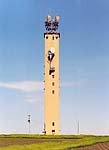
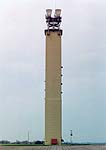
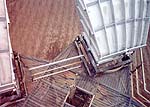
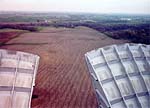
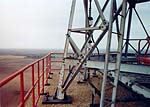
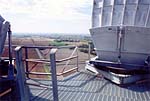
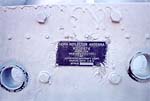
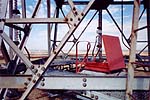
Common Language Location Identifier (CLLI): CLNSIAQ0010
GL Code: IA1290
LATITUDE: N41-52-48 (41.88000)
LONGITUDE: W93-14-24 (-93.24000)
ELEVATION: 1070 feet (326 M)
LOCATION: 4 mi ESE of Collins, IA
Cancelled Call Sign: KAA85
This site was a repeater on the first transcontinental microwave route, and was the last concrete tower constructed before AT&T began building steel towers as construction on the route was continued to the west. The property for the tower was purchased on August 25, 1949. The tower was constructed in early 1950 using the continuous pour, slip form method, it is a type 4C square concrete tower, 190' 6" tall, and initially had 2 delay lens antennas on the roof. One antenna was aimed at the next repeater station eastward at Gilman, IA, the other antenna was aimed westward to the next station at Des Moines, IA. This repeater station is part of the Chicago to Omaha section of the first transcontinental microwave route, this section was originally fitted as a westward only extension of the initial New York to Chicago section of the transcontinental route which became operational September, 1950. It is likely that AT&T was using this route to provide television network programming from the East Coast television network to as far west as Omaha starting around September 1950. This section of the route was later fitted with two TD-2 radio channels in each direction, and was intended to carry both message service and network television programming. The entire transcontinental route became operational from New York to San Francisco by September 1951. Additional channels were added later, so that by 1959 six channels in each direction were in place, the maximum possible with the delay lens antennas. The westbound direction had 3 TV channels, 2 message channels, and a protection channel. The eastbound direction had 4 TV channels, 1 message channel, and a protection channel.
In 1962 a major upgrade of this route was initiated to provide for the addition of up to 6 TD-2 interstitial channels in each direction for greater message capacity. First, in order to keep the repeater site on-line during construction, temporary 8 foot diameter parabolic antennas were installed on the sides of the tower, just below the roof. Next, after the microwave radio equipment was cut over to the temporary parabolics, the delay lens antennas were removed, and a 25 foot tall steel platform holding 4 horn antennas was constructed on the roof. After the horns were aligned to the microwave path, the microwave radios were transferred from the parabolics to the horns.
AR6A single sideband microwave radios operating at 6 GHz, and a side mounted diversity receive antenna aimed at Des Moines were added in 1980 for a further increase in message capacity. Farinon 4 GHz microwave radios were also installed at some point. The TD-2 equipment was taken out of service in 1992. Western Electric DR6/135 digital microwave radios operating at 6 GHz were installed in 1988 as part of a two hop link between Des Moines and Gilman, the digital microwave link was operated until 1999 when the site was taken out of service.
 (from 1994) |
 |
 |
 |
 |
 |
 |
 |
 |
Updated on October 15, 2002 at 22:13 by Albert LaFrance